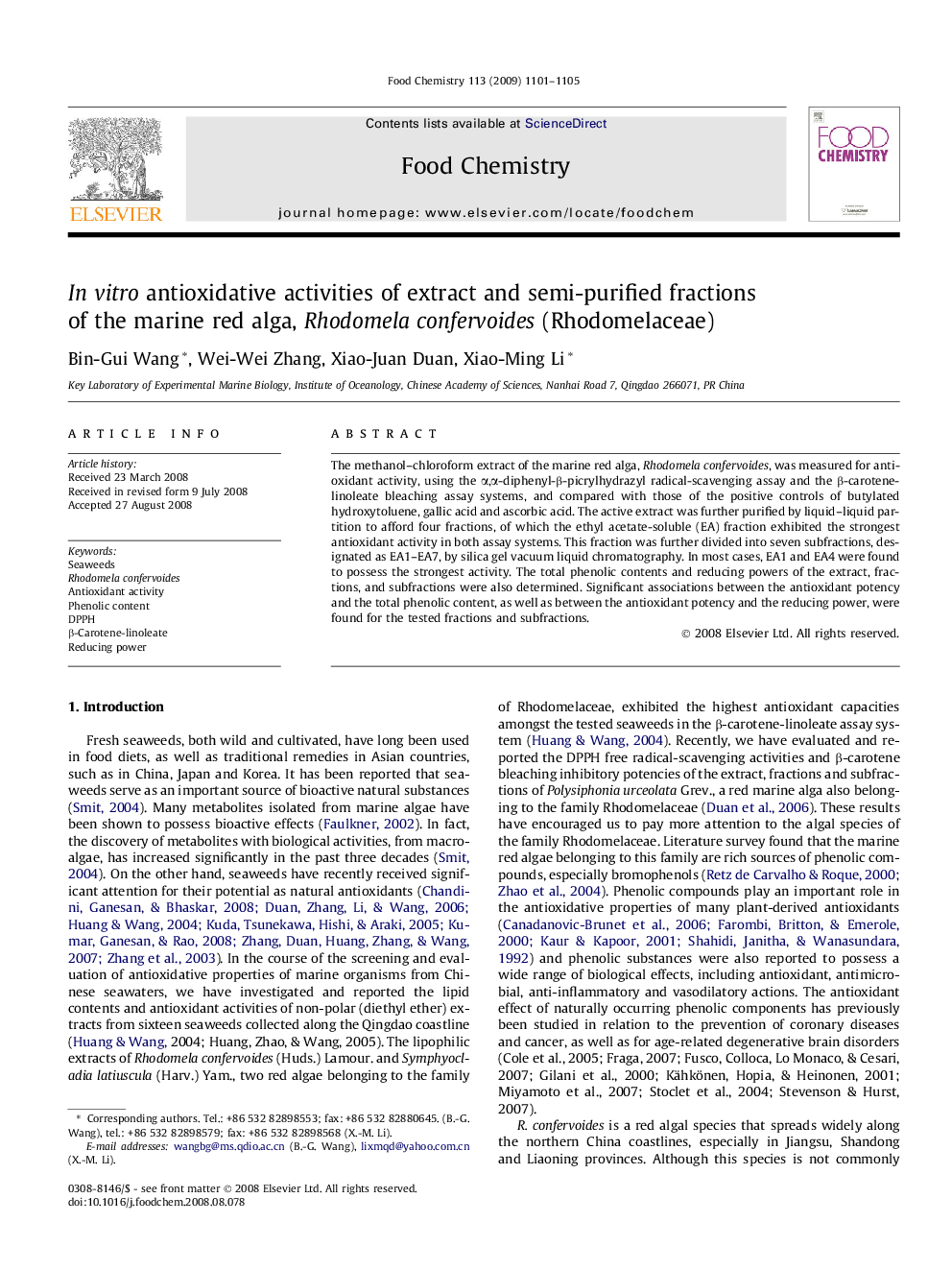| Article ID | Journal | Published Year | Pages | File Type |
|---|---|---|---|---|
| 1188966 | Food Chemistry | 2009 | 5 Pages |
The methanol–chloroform extract of the marine red alga, Rhodomela confervoides, was measured for antioxidant activity, using the α,α-diphenyl-β-picrylhydrazyl radical-scavenging assay and the β-carotene-linoleate bleaching assay systems, and compared with those of the positive controls of butylated hydroxytoluene, gallic acid and ascorbic acid. The active extract was further purified by liquid–liquid partition to afford four fractions, of which the ethyl acetate-soluble (EA) fraction exhibited the strongest antioxidant activity in both assay systems. This fraction was further divided into seven subfractions, designated as EA1–EA7, by silica gel vacuum liquid chromatography. In most cases, EA1 and EA4 were found to possess the strongest activity. The total phenolic contents and reducing powers of the extract, fractions, and subfractions were also determined. Significant associations between the antioxidant potency and the total phenolic content, as well as between the antioxidant potency and the reducing power, were found for the tested fractions and subfractions.
